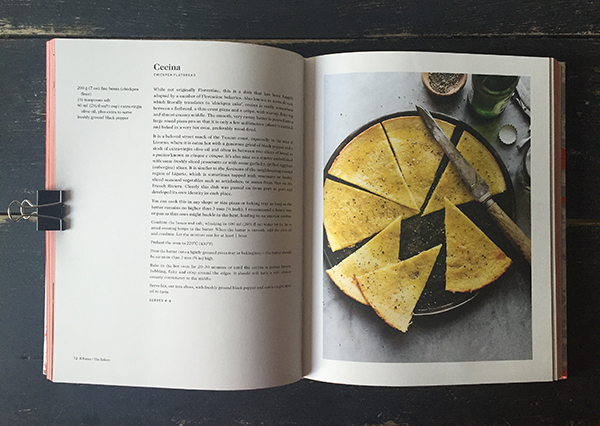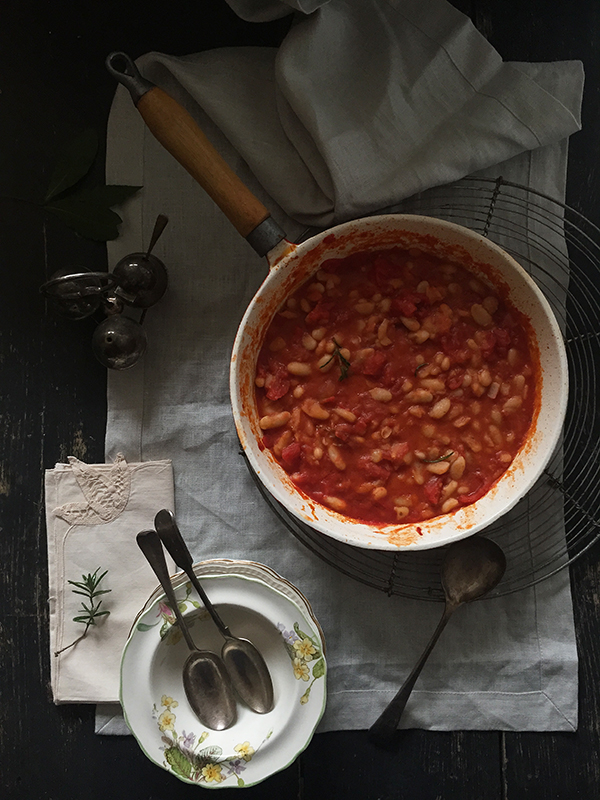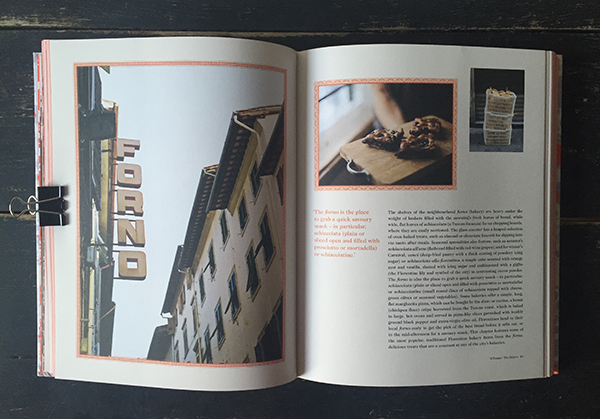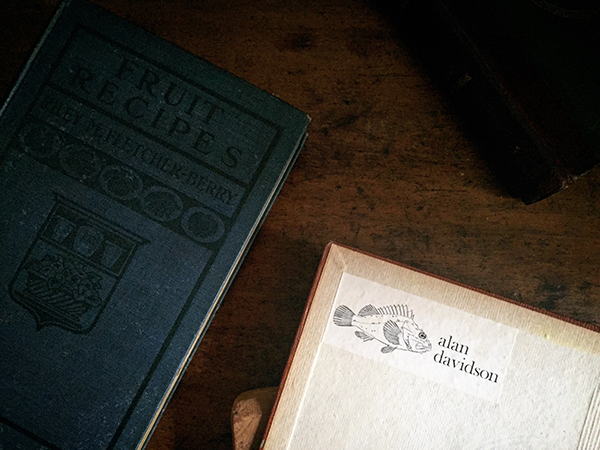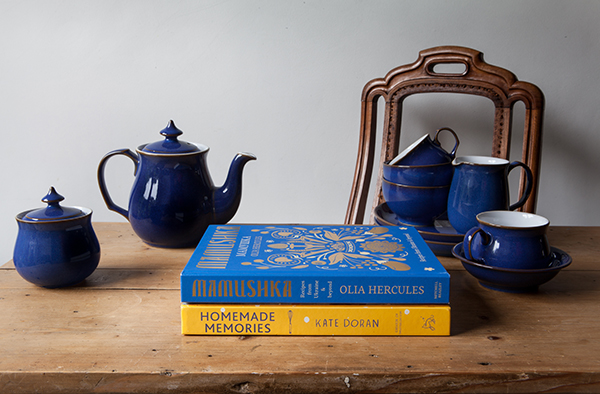The post Florentine appeared first on Miss Foodwise.
]]>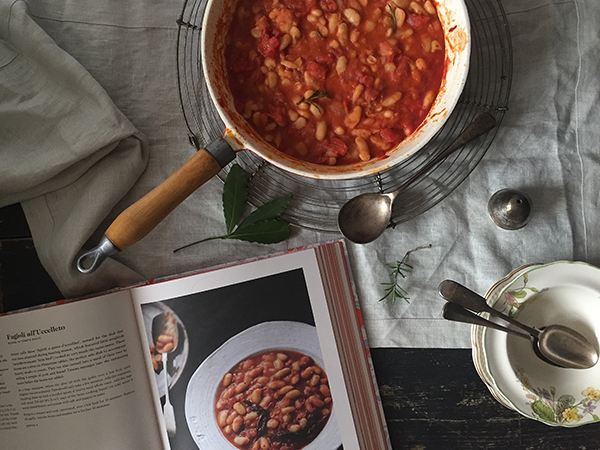 When Florentine arrived on my doorstep, I decided not to read bits here and there and save it for a moment when I could really tuck in with greed. When I did, on a spring-like winter morning with the cats warming my feet and purring silently out of utter bliss, I read it cover to cover.
When Florentine arrived on my doorstep, I decided not to read bits here and there and save it for a moment when I could really tuck in with greed. When I did, on a spring-like winter morning with the cats warming my feet and purring silently out of utter bliss, I read it cover to cover.
Other than the fact that Florentine is a good book, it was also written by a close friend. Emiko Davies was born in Australia but grew up in China, and after her studies in Amerika she ended up in Florence where she lost her heart to a city and a Florentine man.
Quickly she fell in love with the food on offer in la pasticceria (pastry shops), la trattoria (small eatery), il forno (bakery) and food vans in the street selling Lampredotto (tripe) for which Florence is famous. Therefore it is not surprising that the recipes of her book are divided into these chapters, adding il mercato (the market) and il maccellaio (the butcher).
It is refreshing to see a cookbook divided up differently. Too long have chapters been divided into starters, sides, mains and desserts. Florentine’s chapters tell part of the story as do Emiko’s beautiful photo’s of the city that transport you to the streets yourself and make you long for a coffee and a Sfogliatine or Bonboloncini on a white paper napkin in an old fashioned bar.
A few recipes
Cecina in the Il Forno chapter is definitely a must try, although not originally a Florentine dish, it is very good and therefore I employ you to give it a go. Basically this chickpea cake are somewhere between pancakes and flatbreads. I don’t know about you but I always have half open bags of chickpea flour and this recipe puts them to a splendid use. Emiko tells us the Cecina which is also called Torta di ceci, is most popular in Tuscan seaside towns. We visited the coastal town of Livorno together with Emiko and a couple other friends a few years ago, there we visited a small eatery with a wood fired oven where Cecina is served between bread and called Cinque e cinque. The Cecina is crisp and with a healthy dose of black pepper and the addition of grilled aubergine or ham, it is incredibly satisfying.
Fagioli all’Uccelleto, or white beans cooked in tomato sauce, are a favourite breakfast dish for me – think posh English baked beans on toast – but in Italy they are one of the accompaniments to steak or roast meat. It is also prepared adding Tuscan pork and fennel sausages making it a firm favourite of my husband Bruno.
Another traditional and favourite is the Crostone con salsiccia e Stracchino – or crostone with sausage meat and stracchino cheese – which Emiko used to eat at her favourite wine bar. It was introduced to me years ago by Giulia, a mutual friend and fellow food writer of Emiko and me. When I went back home, I carried sausages and stracchino cheese in my hand luggage and made the crostono for Bruno that same evening. The beauty of this dish is how simple it is, just mixing raw sausage meat with a soft young cheese, and then grilled in a got oven. Make sure you have enough of everything in your fridge because you will be wanting seconds, or the same the next day.
The ravioli di pera e ricotta is one on my list to make as I often enjoy the dish at our favourite Italian eatery where the chef is Tuscan. Emiko’s recipe serves the ravioli with a sage and butter while our Italian restaurant chooses a green pepper sauce. I never thought of sage and pear, but now I can not wait to try it.
The Papardelle all’Anatra – or papardelle with duck sauce – makes me want to ring around poultry sellers and farms for a free range duck. It is one of those dishes that just scream comfort in the company of a good full-bodied red wine. Emiko writes that it is now made with duck legs while it used to be made with a whole duck and that papardelle is a favourite pasta shape from the Florentines.
There is something good for everyone in this book, rice gelato, cornetti and Pandiramerino for those with a sweet tooth, meaty sauces and braises for the carnivore, and plenty of vegetable dishes. The book is also beautiful, with food photography by Laura Bamford and photo’s of Florence by the author Emiko. Emiko takes you on a journey through Florence like no other book on Florence has ever done, although I admit I haven’t read any others I’m sure it must be true. It is definitely the first book which looks at Florentine food primarily. Recipes are easy to follow and well explained. I might be biased because Emiko is a good friend, but that also gives me the insight knowledge that she worked very hard on this book.
Florentine: The true Cuisine of Florence is published by Hardie Grant Books March 2016 and available in English in bookstores and online.
You might also enjoy these books on Italian food:
I love Toscana from aforenamed Giulia Scarpaleggia, a book about authentic Tuscan food with beautiful glimpses into her life in the Tuscan countryside where she lives with her family. The recipes are rustic, real and traditional, and have been cooked in my kitchen many times.
Five quarters by Rachel Roddy is a newly published book about Roman food. Rachel lives in Rome and tells us about her life there. With charming stories from the market and beautiful images taken in her Roman flat, it is a book with good home cooking and satisfying flavours.
The post Florentine appeared first on Miss Foodwise.
]]>The post Alan Davidson’s Library appeared first on Miss Foodwise.
]]>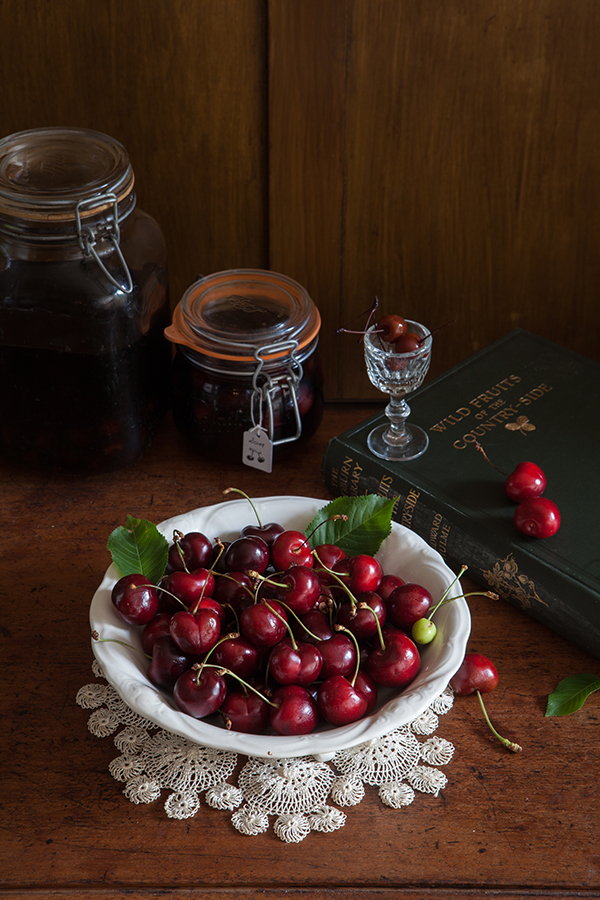
Wild Fruits of the Countryside, Hulme, F. Edward. Alan Davidson’s copy.
A year ago, while on my never-ending quest for rare books, I stumbled upon a selection that once belonged to one great man.
Upon his death over a decade ago, his impressive library was split up and sold to the highest bidder. It was a collection of great value, which showed how this man did his research, and the thoroughness of it.
Alan Davidson was the owner of these books, and although the lot I bought was small compared to his enormous library, it already shows an insight to his train of thoughts.
Various seemingly unimportant books all decorated with his fish bookplate, on wild fruits, on citrus, on cider making and even books in Dutch and French. It is no surprise to me after spending 2 years researching pudding for my book, that Davidson spent 20 years to write that bible; the Oxford Companion to Food. Today that food bible is the first resource I grab when I am in need of an explanation. If it weren’t such a large and heavy tome, it would be my bedside reading. And it is so well respected and loved by many that facts from Davidson’s Oxford companion to food are even used in the program IQ, presented by Stephen Fry.
Although I never met him, I think I would have liked Alan Davidson for his down to earth manner. He loathed food fads and said in a radio interview in 1993:
“Haute cuisine, as they call it, is something I avoid, I am far more interested in what ordinary people eat.
And I am far more interested in producing information about say cookery in latin America, Afrika or South East Asia than adding to the already enormous pile of material about say cookery in France. I’m keen to add to the cell of human knowledge rather than just repeat.”
Davidson wrote his first book on food for his wife when they were living in Tunis – a handbook giving the names of 144 species in 5 languages with some recipes of people he met there. This was upon her request so shopping for food on the market would be slightly easier not speaking the language and not recognising most of the fish on offer.
The result was ‘Seafish Of Tunisia And The Central Mediterranean’ illustrated by art students in Laos which he published himself. Elizabeth David reviewed it in her column for the Spectator and passed it on to Penguin who published it as ‘Mediterranean Seafood’ in 1972. Tom Jayne writes in Davidson’s Obituary that Elizabeth David, ever watchful of professional values, had advised the diplomat to avoid self-publication.
In 1979 Davidson started his own publishing house called ‘Prospect Books’ and a journal of food studies Petits Propos Culinaires or PPC which was taken over by Tom Jayne in 1993. The publishing house has published some of my favourite books on food history and culture and their facsimile editions of old cookery texts have been valuable to me and many others. We can only be thankful that the team behind Prospect Books then and now have saved so many ancient and more recent books from being entirely forgotten, and that they managed to give life to new and slightly quirky books on food subjects. Titles range from ‘Noshe Djan’ (1987) a book on Afghan cookery to ‘Persia in Peckham’ (2007) and ‘Cooking & Dining in Tudor & Early Stuart England’ (2015). Prospect also publishes the proceedings of The Oxford Symposium of Food and Leeds Symposium. The Oxford Symposium was originally founded and co-chaired by Alan Davidson and Dr Theodore Zeldin. The Oxford Symposium website notes that: ‘The first Symposiasts included Elizabeth David, her editor and publisher Jill Norman, Anne Willan and Mark Cherniavsky of the La Varenne Cookery School in Paris, Paul Levy, Richard Olney and Professor Nicholas Kurti’.
Davidson was also supported and guided by Jane Grigson in his work. It is fair to say that Davidson, his wife Jane, their two daughters, Tom Jaine and people like Elizabeth David and everyone involved in Prospect and the Oxford Symposium are to be celebrated for creating a home for food history, a community, where constant research is being constructed and works of great importance for the future created.
We all know that the world is being consumed by a religious battle, but it is in food that we are united. If only the world would be like the Prospect list which shows a clear interest in all cultures of food, and an equal respect for all of them.
It is a privilege to own a selection of Davidson’s books.
For those interested in where Davidson’s books are, these are the ones in my hands apart from The Citrus Cookbook, which I gifted to a special friend.
Delightes for Ladies, Hugh Platt
The Citrus Cookbook
Spices – Volume 1 and 2
Food History Comes of Age – Praemium Erasmianum Essay, 2003
A Book of Mediterranean Food, David, Elizabeth
The French Cook, by Francois Pierre La Varenne, translated into English in 1653 by I.D.G. [Alan Davidson’s copy] 20.00 £
Receipts of Pastry and Cookery for the Use of His Scholars, Kidder, Edward
Fruit Recipes – a manual of the food values of fruits and nine hundred different ways of using them, Fletcher-Berry, Riley M.
The Receipt Book of Elizabeth Raper, and a portion of her cipher journal, edited by her great-grandson, with a portrait and decorations by Duncan Grant
GRANT, Bartle (ed). Elizabeth Raper
Recepten Boek van Mevrow Marselis , Marselis
De Honesta Voluptate, Platina. Bartolomeo De Sacchi Di Piadena.
In an Eighteenth Century Kitchen – a receipt book of cookery, Rhodes, D.(ed); Nichols, Beverley (preface)
Diana Astry’s Recipe Book, c.1700, Stitt, Bette (ed). (Cirket, A.F.)
Lady Bountiful’s Legacy to Her Family and Friends – a book of practical instructions & duties, counsels & experiences, anecdotes hints & recipes, in housekeeping & domestic management, calculated to increase the comforts of home. Timbs, John. (ed).
Hostess, Spry, Constance & Hume, Rosemary
The Household Accounts of Kenninghall Palace in the Year 1525, Howlett, Richard
Dumas on Food – selections from Le Grand Dictionnaire de Cuisine, Dumas, Alexandre (translated by Alan and Jane Davidson)
Wild Fruits of the Countryside, Hulme, F. Edward
How to Know Wild Fruits – a guide to plants when not in flower, by means of fruit and leaf. Peterson, Maude Gridley
An Essay on Bread. (1758), Jackson, H. (chemist)
The Recipe Book, 1659-1672, of Archdale Palmer, Gent, Lord of the Manor of Wanlip in the County of Warwickshire Uden, Grant (ed)
The Cook’s Paradise, being William Verrall’s “Complete System of Cookery”, published in 1759, with Thomas Gray’s cookery notes in holograph. Verrall, William.
Food, Cookery and Dining in Ancient Times – Alexis Soyer’s Pantropheon, Soyer, Alexis
Further reading
Read Tom Jaine’s Obituary for Alan Davidson here >
The post Alan Davidson’s Library appeared first on Miss Foodwise.
]]>The post Summer reading 2015 appeared first on Miss Foodwise.
]]>I know, summer has started two weeks ago, but to be fair I have a valid excuse for being late with my ‘summer reading’ post… I needed to finish my own book!
Anyway we are in the editing and layout fase in English and Flemish so the book isn’t completely finished yet, but it has been written and I have made all the photographs so that part is done.
The past months there were quite a few interesting books coming out, but I have chosen just four of them, because these are the ones I would buy or have bought. These are four different books, so I am confident that there will be a book for all of you in this list.
- Cooking & Dining in Tudor & Early Stuart England
- Swallow This, Serving Up the Food Industry’s Darkest Secrets
- Homemade Memories
- Mamushka
Exploring a new cuisine:
Mamushka by Olia Hercules
I was eagerly waiting to get my hands on this book because the author Olia and I have known each other for over 3 years now on instagram and I watched her going from chef to food stylist, and from food stylist to the Observers ‘rising star’. Olia Hercules, who doesn’t only have the most wicked name, is also a very warm and generous person. It shows in her book where she shares the food of Ukraine and beyond, teaching us about a cuisine that hasn’t really been explored yet in books.
I can’t wait to try the Ukrainian ‘narcotics’, and Tartar lamb turnovers. And the Poppy seed roll brings up memories of my childhood travels around the Czech republic and Hungary where this dish is also a favourite. The watermelon skin jam is just intriguing as are the fermented tomatoes. The Moldovan giant cheese twist calls for a theatrical way of stretching a super thin dough, but Olia assures us we can do it and tells us we should attempt it when in a playful mood.
Other than providing us with many new and exciting traditional soviet dishes to have a play with, we also catch a glimpse of her family as the book travels to Ukraine and visits her home turf. The photographer of this book Kris Kirkham captured the mood of Olia’s life perfectly and adds to the storytelling as photography should do.
Why buy? It’s a whole different and exciting cuisine to explore, and the book is aesthetically beautiful and more importantly, it’s very real and not at all staged like so many books are these days.
Childhood nostalgia:
Homemade memories by Kate Doran
I don’t know about you but when I saw the cover of this book I was sold. I have a weakness for Jaffa Cakes and as Kate, the author explains, the passion for many of these childhood favourites kinda cools when you look on the back of the pack and read about all the stuff they put in there.
But I’d never considered making my own Jaffa cakes, fearing it would be a right faff and wouldn’t taste the same as the ‘real deal’ or rather the ‘shop bought’.
Most of the recipes don’t conjure up childhood memories for me as they are mostly British treats, but then the book reads like a childhood memory and Kate’s short stories with each chapter and recipe surely add to the story of this book. You know I wish these were my childhood treats! What an array of gorgeous things. I can’t wait to start baking from this book when I finally have some time to bake things that aren’t related to my book anymore.
Why Buy? Firstly I would say Jaffa Cakes, but that’s just me. The book is beautiful and I believe it would bring lots of joy to families with children and to grown up children too. We all need a Caterpillar cake or Jammie Dodgers in our life. And did I mention Battenberg cake? Oh yes that too.
The truth is out there:
Swallow This, Serving Up the Food Industry’s Darkest Secrets
by Joanna Blythman
I met Joanna Blythman two weeks ago on the Great Taste Award judging where we always meet, she asked me if I was enjoying her book. I said to her ‘It’s awful! I mean, not your writing, but it’s just awful and it smacks me in the face’. Joanna smiled and understood what I was trying to say. ‘Yes – she said – it is awful and you would probably have to put it down at times’. And she was right. Swallow This is a book which is really hard to swallow because in it Joanna goes undercover in the food industry and uncovers that even the most basic of products have been adulterated. Butter flavour, strawberry flavour, and vanilla that hasn’t even a drop of the original in its ingredients list. And then there is the ludicrous way in which a basic frozen pizza is created, the base is made in x country and frozen, then shipped to x country for tomato sauce to be added and then another location adds vegetables and cheese. When your frozen pizza is ready and boxed, it can have travelled more than you have in two years time. Do we really want that? In a time when food miles are on every food conscious person’s mind? What you are thinking when you picture processed food is only the tip of the mountain. The valley goes deep and dark and Joanna shows us the truth, and although we want to run and hide and never hear these awful stories again… We can’t ignore what is in this book, and we have to think twice about buying that healthy looking fruit salad that has been sprayed to stay ‘fresh’ for days, or those Feta, with Glucono-Delta-Lactone which will never go off. Food has become science, and we’re two seconds away from eating flavoured plastic and artificial meat. This book reads like a horror movie, but sadly this isn’t fiction.
For an extract of the book published in The Guardian follow this link >
Why buy? Don’t you want to know how you can avoid consuming adulterated food? Don’t you want to know what is in your food? This book is an eye opener and goes much further than Michael Pollan has ever done.
Everything you ever wanted to know about the food in this period:
Cooking & Dining in Tudor & Early Stuart England by Peter Brears
Peter Brears’ new book was highly anticipated by me for a while, it was due publication last year but came out in februari this year. If you just gaze upon this magnificent and especially huge tome of Brears you understand why the book was late. Brears spent ten years writing this book, so a few months later wasn’t going to make a difference, except for those people like me constantly checking the Prospect books site to see if it has come out. Imagine my delight when Tom Jaine from Prospect emailed me to say it was finally available to buy. This is the follow-up to Brears’ volume about food in the Middle Ages, a book I mentioned in my ‘Best food books’ list (find it here >). The period covered in this book is a time when new foods from the New World were starting to influence English food. The book starts with the reign of Henry VII and covers dining and practical arrangements and techniques in the kitchen and dining hall up until Charles I. If you are a geek like I am, this book is for you. The words in the book are illustrated with illustrations made by Brears himself and explain us the system of The Counting House to the Buttery and the Pantry.
Why Buy? If you want to learn about Tudor and Early Stuart cooking of course. And also if you are eager to reproduce recipes from this period. This book is an absolute delight and a bible full of knowledge about food of times gone by. Although for me this book makes excellent bedtime reading, it is a huge and heavy volume so make a cup of tea and enjoy it in the comfort of your favourite comfortable chair… maybe with a cushion to support it.
The end
This is it for this years summer reading, these are only four of many great books out there. Rachel Roddy’s Five Quarters: Recipes and Notes from a Kitchen in Rome just came out and is also still on my list to buy and Zinziber, sauces from Poitou is another title from Prospect books which I have been waiting for for some time now. Let me know if I missed some great books!
* I received a review copy from ‘Swallow This’ and ‘Homemade Memories’. The other two books were ordered and payed for by me. All views are my own.
Further reading: ‘Best food books’ list (find it here >)
The post Summer reading 2015 appeared first on Miss Foodwise.
]]>